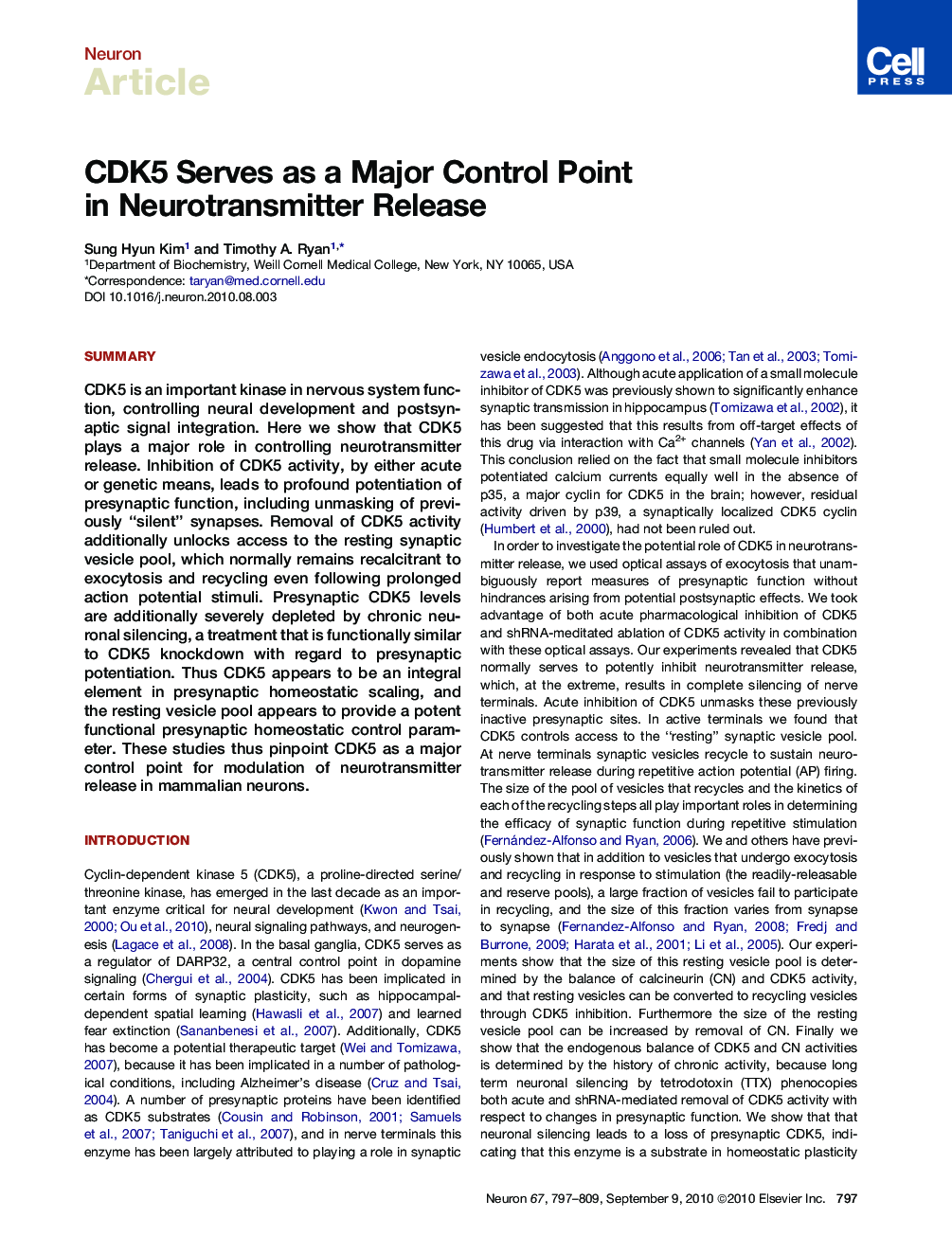| Article ID | Journal | Published Year | Pages | File Type |
|---|---|---|---|---|
| 4321919 | Neuron | 2010 | 13 Pages |
SummaryCDK5 is an important kinase in nervous system function, controlling neural development and postsynaptic signal integration. Here we show that CDK5 plays a major role in controlling neurotransmitter release. Inhibition of CDK5 activity, by either acute or genetic means, leads to profound potentiation of presynaptic function, including unmasking of previously “silent” synapses. Removal of CDK5 activity additionally unlocks access to the resting synaptic vesicle pool, which normally remains recalcitrant to exocytosis and recycling even following prolonged action potential stimuli. Presynaptic CDK5 levels are additionally severely depleted by chronic neuronal silencing, a treatment that is functionally similar to CDK5 knockdown with regard to presynaptic potentiation. Thus CDK5 appears to be an integral element in presynaptic homeostatic scaling, and the resting vesicle pool appears to provide a potent functional presynaptic homeostatic control parameter. These studies thus pinpoint CDK5 as a major control point for modulation of neurotransmitter release in mammalian neurons.
► CDK5 normally suppresses neurotransmitter release ► Calcineurin/CDK5 activity controls access to the resting synaptic vesicle pool ► Exocytosis kinetics are set by calcineurin/CDK5 activity balance ► Resting vesicle pool and CDK5 are part of a homeostatic feedback circuit
